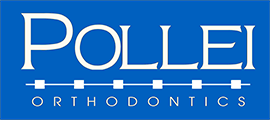Orthodontic Appliances
MARA | Lower Lingual Arch | Nance | Habit Appliance | PowerScope | Reverse Pull Headgear | Rapid Palatal Expander | Quad Helix | TADs | Headgear
MARA
 The Mandibular Anterior Repositioning Appliance (MARA) bite correcting appliance is suitable for treating overbite malocclusions, which are characterized by protrusion of the upper front teeth or by a lower jaw and teeth that are positioned back in regard to the upper jaw and teeth. The MARA is a very reliable and effective appliance.
The Mandibular Anterior Repositioning Appliance (MARA) bite correcting appliance is suitable for treating overbite malocclusions, which are characterized by protrusion of the upper front teeth or by a lower jaw and teeth that are positioned back in regard to the upper jaw and teeth. The MARA is a very reliable and effective appliance.
The appliance is secured to the patient’s first molars and features no removable parts, which means patient compliance is not an issue. The upper “elbows” are adjusted and advanced as bite correction requires. The appliance can be advanced on one side or both sides.
Sore spots are minimal. Initially, it may feel strange to hold your jaw forward while eating, but within two weeks, chewing will become more natural. We recommend you eat soft foods initially. Do not chew on the elbows. Avoiding candy, hard foods, etc during treatment helps to prevent breakage of the appliance. The MARA is generally worn for 10-12 months.
Lower Lingual Arch
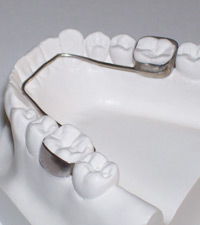 A Lower Lingual Arch acts as a space maintainer to keep the molars from drifting forward, and prevent them from blocking the space where permanent teeth will eventually erupt. This appliance is commonly used in cases of premature loss of baby tooth or when the lower teeth of a growing child are slightly crowded and no permanent teeth are extracted to correct the problem.
A Lower Lingual Arch acts as a space maintainer to keep the molars from drifting forward, and prevent them from blocking the space where permanent teeth will eventually erupt. This appliance is commonly used in cases of premature loss of baby tooth or when the lower teeth of a growing child are slightly crowded and no permanent teeth are extracted to correct the problem.
You should expect soreness the first day or two, and it may hurt to chew. We recommend a soft diet initially. Avoid sticky or hard foods. Brushing and flossing daily is very important. Be sure to clean around the bands that are connected to the molars and the wire on the tongue side. This will prevent the formation of cavities or infection of the gums.
The duration of wear varies. We will monitor the eruption of new teeth and make adjustments. Generally, the Lower Lingual Arch is removed following the eruption of all the permanent teeth.
Nance
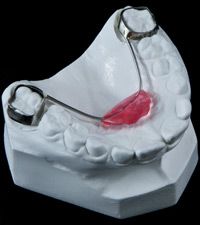 The Nance Appliance is used to prevent upper molars from rotating or moving forward after you’ve worn a headgear, a Wilson’s arch or any other appliance to move your molars back. Some patients wear the Nance Appliance while they are awaiting their bicuspids to grow into place.
The Nance Appliance is used to prevent upper molars from rotating or moving forward after you’ve worn a headgear, a Wilson’s arch or any other appliance to move your molars back. Some patients wear the Nance Appliance while they are awaiting their bicuspids to grow into place.
The appliance is made of two bands that are cemented onto the first molars and a wire spans the roof of the mouth from one molar to the other. An acrylic pad or “button” covers the wire that touches the roof of your mouth directly behind your front teeth.
Patients should always brush around the bands daily. Do not eat sticky, chewy candy as it can loosen your appliance.
Habit Appliance
 Sucking is a natural reflex that relaxes and comforts babies and toddlers. Children usually cease thumb sucking when the permanent front teeth are ready to erupt. Typically, children stop between the ages of 2 and 4 years. Thumb sucking that persists beyond the eruption of primary teeth can cause improper growth of the mouth and misalignment of the teeth. If you notice prolonged and/or vigorous thumb sucking behavior in your child, talk to your dentist.
Sucking is a natural reflex that relaxes and comforts babies and toddlers. Children usually cease thumb sucking when the permanent front teeth are ready to erupt. Typically, children stop between the ages of 2 and 4 years. Thumb sucking that persists beyond the eruption of primary teeth can cause improper growth of the mouth and misalignment of the teeth. If you notice prolonged and/or vigorous thumb sucking behavior in your child, talk to your dentist.
One solution to thumb sucking is an appliance called a “fixed palatal crib” or habit appliance. This appliance is put on the child’s upper teeth by an orthodontist. It’s placed behind on the upper teeth on the roof of the mouth. The crib consists of semicircular stainless steel wires that are fastened to molars using steel bands. The stainless steel wires fit behind the child’s upper front teeth, and they are barely visible. The crib usually stops the habit of thumb sucking within the first few days of use.
Powerscope
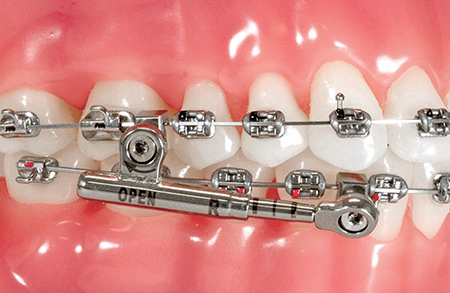 The Forsus appliance is used in order to help move the upper molars back while moving the lower arch forward. Composed of a spring coil rod, the appliance is used while a patient is currently wearing braces. It runs from the upper first molar band down to the lower archwire.
The Forsus appliance is used in order to help move the upper molars back while moving the lower arch forward. Composed of a spring coil rod, the appliance is used while a patient is currently wearing braces. It runs from the upper first molar band down to the lower archwire.
You may notice some discomfort initially, so we recommend a soft food diet for the first few days after the appliance is placed. It is important to keep the appliance clean; you may do this by carefully brushing the coil and other metal pieces of the appliance. Also, patients shouldn’t open their mouths excessively wide or else the appliance may come apart.
If your Forsus appliance breaks or you have other concerns, please contact our office immediately to schedule a repair appointment.
Reverse Pull Headgear

In some cases where an underbite growth pattern is present, we may recommend using a reverse headgear (face mask) as part of the treatment plan. This appliance is designed to fix the discrepancy between your upper and lower jaws by moving the upper jaw forward to correct the malocclusion.
Successful results depend entirely on patient compliance. It may take several days to become accustomed to the appliance, but with practice it becomes easier to place and remove the reverse headgear. We will determine the length of time you should wear your headgear, but it is generally 12-14 hours per day (much of which is while you sleep). You should not wear your headgear while participating in sporting activities.
Sometimes your chin may get irritated from the headgear. To prevent this from happening, you should always keep the area clean and often change the insert in the chin cup. If the skin becomes very dry, moisturizing cream can be helpful. If your headgear breaks or is bent, call us so we can fit you in with a repair appointment so your treatment will not be delayed.
Rapid Palatal Expander
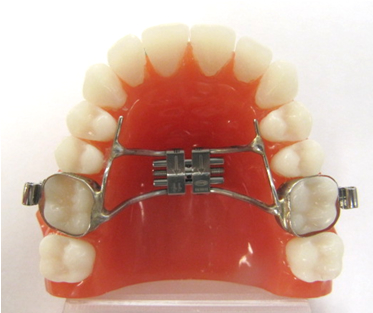 Attached to the upper molars by cemented bands, the Rapid Palatal Expander is an orthodontic device used to create a wider space in the upper jaw. It is typically used when the upper jaw is too narrow for the lower jaw or when the upper teeth are crowded or blocked out of the dental arch.
Attached to the upper molars by cemented bands, the Rapid Palatal Expander is an orthodontic device used to create a wider space in the upper jaw. It is typically used when the upper jaw is too narrow for the lower jaw or when the upper teeth are crowded or blocked out of the dental arch.
When patients are still growing, their connective tissue between the left and right halves of their upper jaw is very responsive to expansion. By simply activating the expander through turning a screw in the center, with a special key we provide, gradual outward pressure is placed on the left and right halves of the upper jaw. This causes an increased amount of bone to grow between the right and left halves of the jaw, ultimately resulting in an increased arch width.
Quad Helix
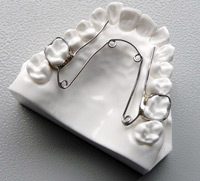 The Quad Helix is a fixed orthodontic appliance used for upper arch expansion. Bands are cemented to your back molars to keep the appliance in place while four helix springs help widen the arch. This appliance is ideal for patients with crowded arches or to correct a posterior crossbite. The advantage of a quad helix is it doesn’t require any activation by patients or parents to do it’s job.
The Quad Helix is a fixed orthodontic appliance used for upper arch expansion. Bands are cemented to your back molars to keep the appliance in place while four helix springs help widen the arch. This appliance is ideal for patients with crowded arches or to correct a posterior crossbite. The advantage of a quad helix is it doesn’t require any activation by patients or parents to do it’s job.
Like any other orthodontic appliance, it is important to maintain a good oral hygiene while wearing the Quad Helix. Patients should brush around and under the appliance and also floss and rinse thoroughly to remove any food particles.
TADs
 One of the many important advances in orthodontics has been the development of temporary anchorage devices (TADs). Made of a bio-compatible titanium alloy, TADs are miniscrew anchors which are inserted into specific places in the mouth to be used as a fixed point to move teeth with. Before TADs, orthodontists who wanted to move some teeth while keeping others still, or to achieve orthodontic movement in a mouth with missing teeth, had to rely on headgear for their fixed point. But TADs now provide an option that is smaller, more discrete, and requires significantly less work for the patient.
One of the many important advances in orthodontics has been the development of temporary anchorage devices (TADs). Made of a bio-compatible titanium alloy, TADs are miniscrew anchors which are inserted into specific places in the mouth to be used as a fixed point to move teeth with. Before TADs, orthodontists who wanted to move some teeth while keeping others still, or to achieve orthodontic movement in a mouth with missing teeth, had to rely on headgear for their fixed point. But TADs now provide an option that is smaller, more discrete, and requires significantly less work for the patient.
TADs are not indicated for everyone or in every case. Ask Dr. Pollei if you’d like to know more about how we use TADs in our office.
Headgear
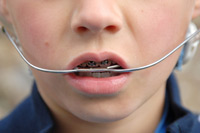 Although rarely used, headgear is very effective at correcting excessive overbite in special circumstances. This is done by placing pressure against the upper teeth and jaw to help move them into better positions. The key to success with your headgear appliance is consistency. Headgear must be worn a certain number of hours per day, and if not, it must be made up the following day. Headgear should never be worn while playing sports and should also be removed while eating or brushing your teeth.
Although rarely used, headgear is very effective at correcting excessive overbite in special circumstances. This is done by placing pressure against the upper teeth and jaw to help move them into better positions. The key to success with your headgear appliance is consistency. Headgear must be worn a certain number of hours per day, and if not, it must be made up the following day. Headgear should never be worn while playing sports and should also be removed while eating or brushing your teeth.
